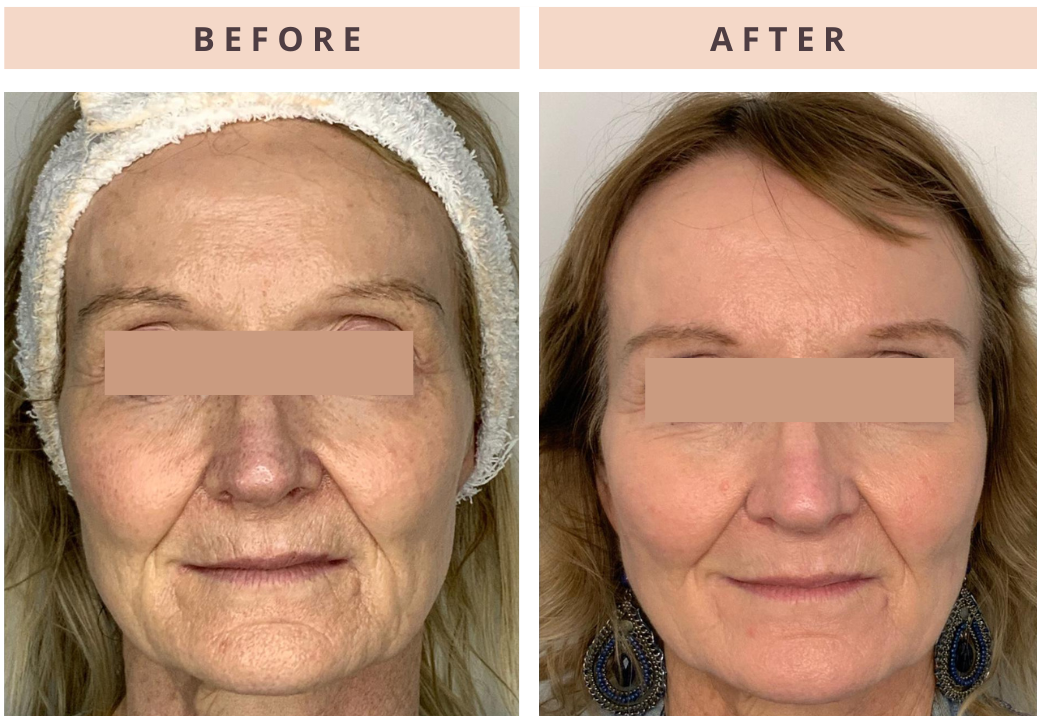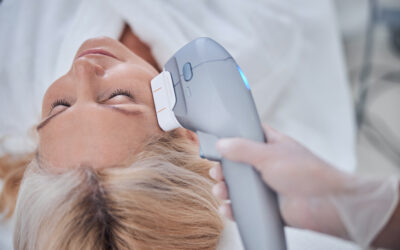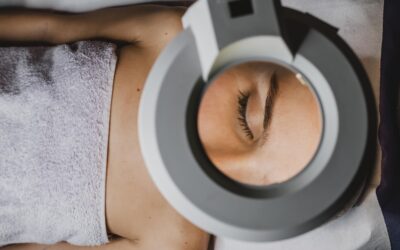Service
Pigmentation, Broken Vessels & Skin Rejuvenation in Calgary
You can finally say goodbye to pigmentation and Redness with the Quanta Evo Laser!
If you’ve been dreaming of a flawless, even complexion without the hassle of traditional treatments, you’re in for a treat. The Quanta Evo laser is your new best friend in the quest for beautiful, radiant skin.
What causes pigmentation on face and body?
Pigmentation skin lesions occur when excess melanin (the pigment responsible for skin color) is produced or deposited in certain areas of the skin. These lesions can manifest in various forms and may affect your skin’s appearance and texture. Here’s a closer look at some common types:
Age Spots (Liver Spots)
- What are Age Spots: Small, flat, brown or black spots that appear on sun-exposed areas like the face, hands, and shoulders.
- Cause: UV radiation from the sun accelerates melanin production, leading to localized pigmentation.
Sunspots
- What are sunspots: Similar to age spots, sunspots are darker patches on the skin caused by prolonged sun exposure.
- Cause: UV damage to the skin stimulates melanin (pigment cell) production in specific areas.
Post-Inflammatory Hyperpigmentation (PIH)
- What is post-inflammatory hyperpigmentation: Dark spots that appear after an inflammatory skin condition heals, like acne, scars or eczema/psoriasis.
- Cause: Skin inflammation triggers excess melanin production as part of the healing process.
Freckles
- What are freckles: Small, flat spots that are usually tan or light brown and are most commonly found on people with fair skin.
- Cause: Genetic factors combined with sun exposure can cause increased melanin production in certain areas.
Nevi (Moles)
- What are nevi: Pigmented spots or growths on the skin that can range from flat to raised.
- Cause: A benign growth of melanocytes, the cells that produce melanin.

How do you treat pigmentation?
The Alexandrite laser is a powerful tool in treating various pigmentation issues. It uses a specific wavelength (depth) of light to target and break down excess melanin in the skin. This light energy is converted into heat, which breaks down the excess melanin cells into much smaller particles. The body’s natural processes can then wash away these smaller particles, leading to a reduction in the appearance of the spots.
- Precision: Targets specific pigmentation issues without affecting surrounding skin.
- Minimal Downtime: Most people experience only mild redness or swelling post-treatment.
- Effective: Proven results for reducing various types of pigmentation, leading to clearer, more even skin.

What Causes Broken Vessels on the Face and Body?
Broken vessels, also known as spider veins or telangiectasia, are small, dilated blood vessels that appear near the surface of the skin. They can manifest as red, blue, or purple lines and are commonly found on the face and body. Several factors contribute to their development. Genetics plays a significant role, as individuals with a family history of broken vessels are more likely to experience them. Sun exposure can weaken the skin and blood vessels, leading to their appearance. Aging naturally causes the skin to lose elasticity, making vessels more prone to breaking. Additionally, hormonal changes, such as those during pregnancy or with certain medications, can also trigger the development of these vessels. Chronic skin conditions like rosacea and prolonged exposure to extreme temperatures can exacerbate their formation.


How to treat broken Vessels: ND:Yag Laser and Electrocautery

ND:Yag Laser and electrocautery are two effective treatments for broken vessels, each utilizing different techniques to achieve noticeable results.
- The ND:Yag laser operates using a specific wavelength (depth) of light that targets the hemoglobin in the blood within the dilated vessels. This light is absorbed by the blood vessels, causing them to coagulate and eventually be reabsorbed by the body. The procedure is minimally invasive, with patients often experiencing only mild discomfort and minimal downtime.
- Electrocautery involves using a fine electrical current to directly heat and seal off the broken vessels. This method works by delivering a precise amount of electrical energy to the affected vessels, causing them to collapse and be absorbed by the body over time. Electrocautery is particularly useful for treating smaller, more superficial vessels. Both treatments are highly effective, with results typically visible after a few sessions, leading to a clearer, more even complexion.
Frequently Asked Questions for pigmentation and redness
What is the Quanta Evo Laser Elluminate Treatment?
How Does It Work?
What Can You Expect?
Quick Recovery: Get back to your routine almost immediately, with just a bit of redness/warmth similar to a mild sunburn that fades in a few hours. Don’t forget your mineral sunscreen!
Stunning Results: Noticeable improvement in skin tone and texture within a few weeks and only a few sessions required!
Quick and easy sessions: Most treatments last around 20-30 minutes, making it easy to fit into your schedule, after work or over your lunch break.
How does Electrocautery remove broken blood vessels from the face?
Electrocautery is a precise treatment that uses a fine probe to deliver controlled heat directly to broken capillaries, spider veins, and visible blood vessels on the face. At Elysian Laser Aesthetics in Calgary, we use specialized electrocautery techniques to carefully coagulate the unwanted vessel, causing it to collapse and disappear. The treatment is performed with extreme precision, targeting only the problematic vessel while leaving surrounding skin untouched. Most clients see the vessel fade immediately or within a few days as the body naturally absorbs the treated capillary. Electrocautery is particularly effective for stubborn facial vessels, cherry angiomas, and spider veins that are too small or resistant for other treatments. Results are typically permanent for the treated vessels, though new ones may develop over time due to genetics, sun exposure, or rosacea.
What's the difference between IPL and laser for treating pigmentation?
Alexandrite laser is specifically designed to target pigmentation with a precise wavelength (755nm) that’s highly absorbed by melanin, making it exceptionally effective for sun spots, age spots, freckles, and hyperpigmentation. Unlike IPL (which uses broad-spectrum light), Alexandrite laser delivers concentrated energy directly to pigmented lesions with greater precision and power. At our South Calgary clinic, we use Alexandrite laser for clients who need targeted removal for deeper, stubborn pigment with dramatic results. The treatment causes dark spots to darken immediately, then flake off within 7-14 days, revealing clearer skin underneath. Alexandrite laser typically requires fewer treatments than IPL (often 1-2 sessions vs 3-5 for IPL) and provides more aggressive pigment removal. However, it specifically targets pigmentation only—it does not treat redness or vascular concerns like broken capillaries.
Can you treat pigment and redness in the same treatment in Calgary?
At Elysian Laser Aesthetics, we use Alexandrite laser and IPL to target pigmentation concerns like sun spots and dark patches, and electrocautery to precisely remove broken capillaries, spider veins, and other vascular concerns.
While these are different treatments, we can often perform both during the same appointment if you have multiple concerns. For example, we might treat sun spots on your cheeks with Alexandrite laser and remove visible broken capillaries around your nose with electrocautery. During your consultation at our Mahogany location, we’ll assess your specific skin concerns and create a customized treatment plan.
We’ll recommend the safest, most effective approach based on your individual skin type and goals.
Blog
Latest news on laser services
How Much Does CO2 Laser Cost in Calgary in 2025?
If you're searching for "CO2 laser cost Calgary" or wondering about fractional CO2 laser resurfacing prices in Canada, you've come to the right place. One of the most common questions people ask is: "How Much Does CO2 Laser Cost?" This comprehensive guide breaks down...
How Often Can You Do IPL?
If you're considering Intense Pulsed Light (IPL) therapy, one of the most common questions you'll encounter is: "How Often Can You Do IPL?" The answer might surprise you, especially if you've been quoted packages of 4, 6 or even 8 sessions upfront. Let's break down...
Laser Treatment to Tighten Skin: How It Works
Laser Treatment to Tighten Skin is more than just shining a light on your face—it’s advanced science that stimulates collagen for firmer, smoother, younger-looking skin. Understanding exactly how CO2 laser energy remodels the skin helps you choose the right treatment...



